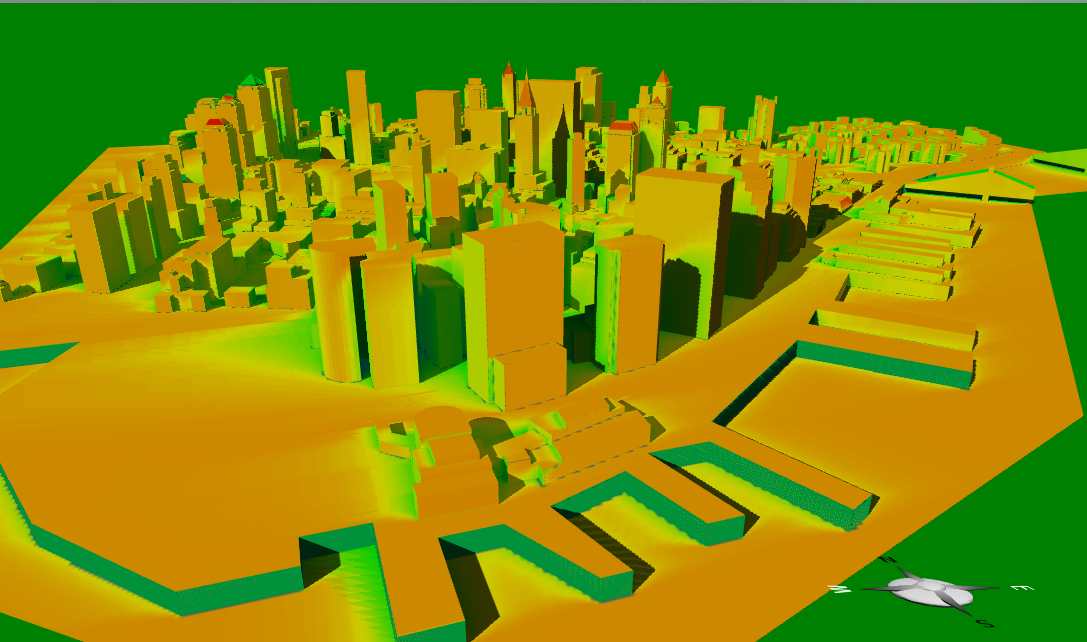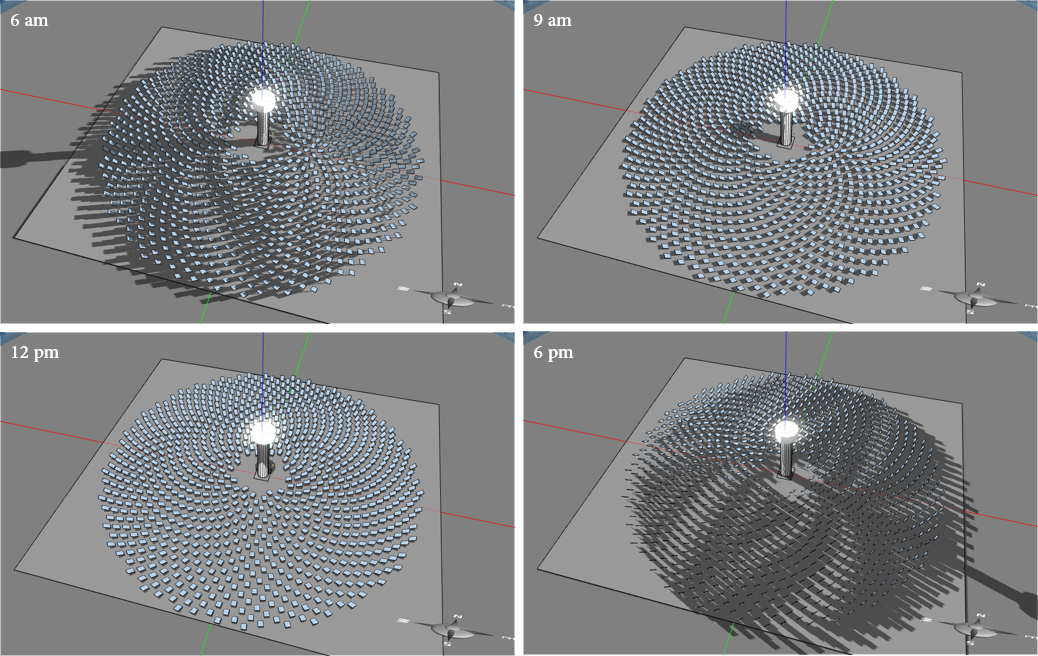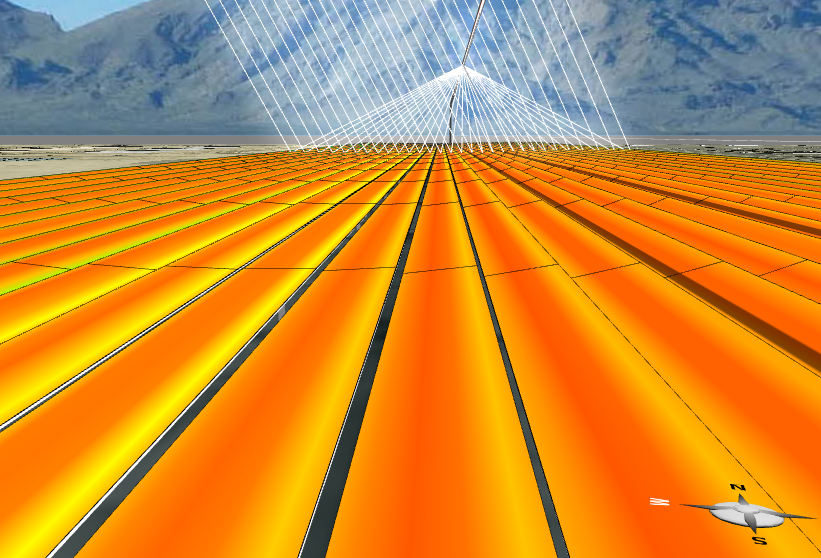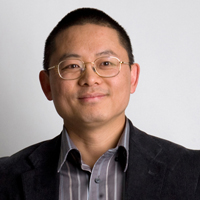Vision




 Solar energy simulation and design
Solar energy simulation and designEngineering design is a sophisticated creative skill that traditionally requires many years of learning and practice. It is now officially part of the K-12 science standards in many states of the United States. And engineering skills will only gain more importance as the nation is moving towards rebuilding her infrastructure and manufacturing industry and creating more high-quality jobs for more people. This challenge requires enormous investments in grassroots science education and human resources development imperative to fostering the growth of our engineering and technology workforce responsible for building a sustainable and resilient world. In today's global economy, the same need exists not only in the U.S., but also around the world.
In reality, however, teaching engineering design requires tremendous efforts from teachers who now also need to manage the complexity of engineering in addition to the complexity of a class. To help students and teachers, we are developing a "smart" computer-aided design (CAD) tool, or more broadly a computer-aided engineering (CAE) tool, that can generate dynamic, adaptive feedback for teaching engineering design—based on logging and analyzing student actions in real time as well as calculating and evaluating their design artifacts using principles of data mining, artificial intelligence, and computational physics. Being able to collect extremely fine-grained process data and evaluate all sorts of design solutions, this intelligent CAD/CAE tool will provide a new tool for understanding how students and engineers learn to solve engineering design challenges and for investigating how their learning and work outcomes can be improved and their creativity unleashed—at a satistically significant scale that was unthinkable before.
History
In 2008, Dr. Charles Xie wrote a proposal titled Enhancing Engineering Education with Computational Thinking to the National Science Foundation to create a CAD tool from scratch so that independent research and development could be conducted to realized this vision. Thanks to the generosity of the agency, the proposal was awarded, allowing Dr. Saeid Nourian to join the team and the Energy3D software you see today to be developed. A second proposal, titled Large-Scale Research on Engineering Design Based on Big Learner Data Logged by a CAD Tool, was awarded in 2013, allowing the team to focus on developing the data mining capacity of the software. A third proposal, titled SmartCAD: Guiding Engineering Design with Science Simulations, was awarded in 2015, allowing the team to focus on developing the artificial intelligence capacity of the software. To date, Energy3D has benefited more than 40,000 students and teachers worldwide, ranging from elementary schools to research universities.
Credit
The free and open-source Energy3D program (GitHub) is brought to you by:
Dr. Charles Xie has over 20 years of research and development experiences in computer simulation and software engineering. Since 2008, he has served as the Principal Investigator of 11 grants funded by the National Science Foundation and one grant funded by Generator Motors (as well as a Co-Principal Investigator of two grants funded by the National Science Foundation). Charles contributed more than 200,000 lines of code to Energy3D and is actively developing the software.
(Past contributor) Dr. Saeid Nourian made important contributions to the development of the 3D design interface and graphics from 2010 to 2017. Saeid contributed about 50,000 lines of code to Energy3D.
Acknowledgements
Funding of the development of this program and its applications to teaching and learning is generously provided by the National Science Foundation of the United States under grants #0918449, #1304485, #1348530, #1503196, #1512868, and #1721054, and General Motors under grant #34871079.
This program would have been impossible without the open-source Java 3D graphics library Ardor3D and JOGL. Our deepest thanks go to the heroic programmers who develop and maintain these Java 3D libraries, especially Joshua Slack and Julien Gouesse. We thank Shasha Liu for helping with the UI/UX of the software. We also thank Prof. Robin Adams, Dr. Sandy Carriker, Dr. Jie Chao, Prof. Jennie Chiu, Prof. Chandan Dasgupta, Dr. Molly Goldstein, Amanda Hatherly, Erica Jansson, Prof. Alejandra Magana, Joyce Massicotte, Dr. Camilo Vieira Mejia, Prof. Senay Purzer, Dr. Corey Schimpf, Prof. Zhenghui Sha, Prof. Ji Shen, and Kim Spangenberg for conducting research and evaluation on the effectiveness of Energy3D in K-16 STEM education. Inputs from industry collaborator Dr. Alex Lee are much appreciated. The layout and style of this website were designed by our unrivaled webmaster Ethan McElroy. The images of trees and people are from SketchUp's free 3D Warehouse (with permission to use) and the free clipart kindly provided by the Graphics Fairy.
Finally, we are indebted to you—the user—for reporting errors to us through the bug submission tool built in the software. With your reports, we have been
able to nail and fix bugs in an instantaneous way that was impossible before. So thank you for your help and please keep them coming!

